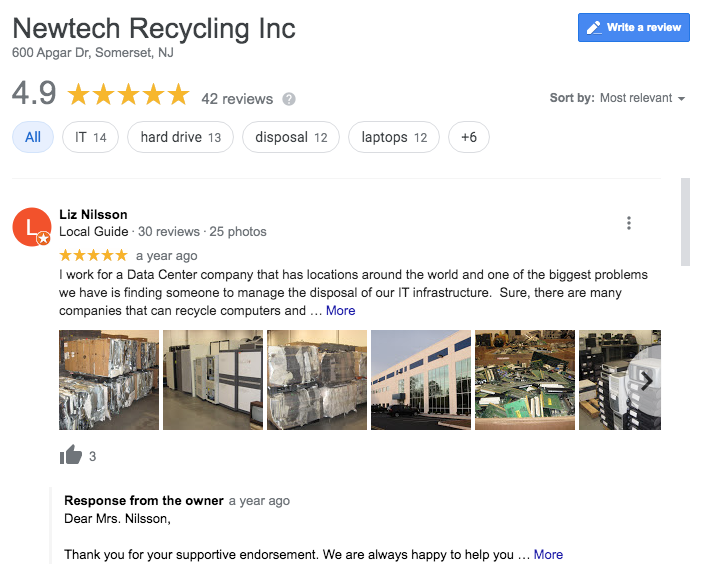With 46% of product searches beginning with Google and 93% of people consuming online reviews as if they were personal recommendations, reputation management is more important than ever.
Whether you’re an established corporation or a newbie personal brand, reputation management should be a priority for all companies. It can be done DIY on a shoestring budget or outsourced to experienced SEO agencies. Either way, managing your reputation takes time, effort, and patience. And when done properly can help you grow a flourishing business with raving fans.
What Is Reputation Management?
Reputation management has many interchangeable names and can be referred to as online reputation management (ORM), internet reputation management, impression management, rep management, brand perception, or brand reputation management.
Reputation management is the effort to affect how people view a brand or company. In today’s climate where almost everyone has a platform in one form or another, both professional and personal brands need to keep an eye on managing how they are perceived both online and off.
It’s important to know that ORM deals with who people think you are and is not necessarily based on the actual integrity of a business or individual. The way people perceive a brand influences everything, and with the internet at everyone’s fingertips, it’s companies like Google and its artificial intelligence algorithms that tell people what your reputation is rather than solely direct human interaction.
Reputation management includes monitoring online mentions, creating positive content, addressing any negative content or customer feedback that might damage brand perception, and using strategies to prevent and solve problems that could harm a brand’s reputation.
What Is the Goal of Reputation Management?
So what is the ultimate goal here? Why should you care about ORM? Because the way any business or brand is perceived online, big or small, directly affects its bottom line.
A positive perception boosts sales and marketing. In some cases, reputation management can even save a company from complete failure.
The goal of online reputation management, like any reputation, is to shape the way people perceive you. The goal is to create trust because when people trust you, they buy from you. And the better your reputation, the deeper the trust, the more poised you are to grow as a company.
Reputation management can be the difference between longtime customers that love you and can’t get enough of you or one-off customers that didn’t have a great experience and would never return to or recommend you.
Where Does Reputation Management Happen?
Today, most reputation management occurs online. And while you can’t control what a person thinks, you can control what they see online – or at least try. While it’s hard to change minds on an individual level, online review platforms and sounding boards such as Google, Yelp, and YouTube have become a place where anyone can leave a strongly worded opinion, be it good or bad. Online reviews can make or break a company. It’s easy to understand why, with 85% of people taking online reviews as personal recommendations.
The internet is vast and gives everyone a tiny (or big) microphone. Companies have to be more vigilant than ever to create a positive brand experience and minimize damage control. It’s impossible to tell when dealing with a customer if they have a secret arsenal of a million followers somewhere online waiting to be weaponized. One poorly handled interaction has the potential to sink a company’s reputation or even end it altogether.
On the flip side, it is important to mention that as humans, we carry a “negativity bias” and therefore are more likely to listen to and believe negative stories about a company or brand simply based on our preservation instincts. Unfortunately, this means that bad news gets more clicks, making it even more imperative to create a trustworthy brand.
How to Perform Reputation Management
Reputation monitoring comes in many shapes and sizes and works best when taking in various data points and platforms. Below, we will go over some steps to help you to devise your reputation management strategy.
Audit Your Reputation
Conduct an online audit to get a better picture of how people view your brand. You can start with a simple Google search (use an incognito window) – study the results of the first and maybe even the second page. What comes up? Positive reviews? Negative news articles? Take notes!

You can also look at Google My Business to see what comes up. What kind of reviews are people leaving you? It should go without saying, but make sure that the company information is correct – things like business hours, website URL, etc. This is one of the easiest places to start building trust.
SERP Analysis
This directly ties into the first point. You’ll want to make sure you are using some branded keywords on web pages as well as social accounts. Think of the first page of Google as your business card, and pay attention to what results are showing for your company.
Leverage Paid Media
Paid media is anything that requires payment for brand representation. Think Google Ads, Facebook™ ads, sponsored tweets, and even influencer posts. This is fairly straightforward because you have complete control over the content being created and presented online.

Leverage Social Media
Social media should be about creating positive content. Focus on creating the feeling you want people to have when they interact with your brand. Educational and entertaining content goes a long way. People love to feel like they are getting value.
Feedback Responses/Online Customer Relations
With 85% of people saying they take online reviews just as they would a personal recommendation, it’s more important than ever for companies to monitor reviews and respond to both negative and positive ones. You can also gather valuable insights into how people feel about your company. Track feedback and consider product or service changes when it becomes clear that there is general ubiquitous feedback about something. Tweaking a product or service to better serve people’s needs is a great way to improve a reputation.

Google Knowledge Panel Optimization
Be sure that your knowledge panel is up to date with the most accurate and informative information. It’s very hard to get one of these, typically creating/having a Wikipedia page helps, but those are also hard to get verified. If you are lucky enough to gain a knowledge panel make sure it’s correct or suggest the proper edits to Google. If you can’t, simply ensure your GMB is optimized.
Backlink Management
Backlinks can be great for brand building. The better the source, the better Google will view your reputation. However, backlinks can also be detrimental to a brand. Keep in mind that you can reach out to websites to request or dispute misleading links.
Use a tool like Semrush or Ahrefs to determine your authority score and to analyze your backlink profile.

If you have the ability to gain natural, high authority links, do so!
Don’t Wait for Negative Content: Build Your Reputation Now!
Whether you are a large or small brand, it’s clear that public perception and online reputation management are here to stay.
While it’s impossible to control the narrative fully, there are plenty of ways to wrangle public perception. If you focus on creating positive content, responding in a timely fashion to customer needs and feedback, and managing your online SEO and backlinks, you are well on your way to a long-lasting brand with raving fans.
